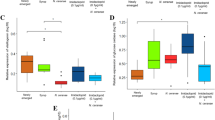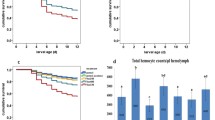Abstract
Varroa destructor is one of the major pests that affect honeybees around the world. Chemical treatments are common to control varroosis, but mites possess biochemical adaptive mechanisms to resist these treatments, enabling them to survive. So far, no information is available regarding whether these pesticides can induce the expression of heat shock protein (Hsp) as a common protective mechanism against tissue damage. The aims of this study were to determine differences in heat shock tolerance between mites collected from brood combs and phoretic ones, and to examine patterns of protein expression of Hsp70 that occur in various populations of V. destructor after exposure to acaricides commonly employed in beekeeping, such as flumethrin, tau-fluvalinate and coumaphos. Curiously, mites obtained from brood cells were alive at 40 °C, unlike phoretic mites that reached 100% mortality, demonstrating differential thermo-tolerance. Heat treatment induced Hsp70 in mites 4 × more than in control mites and no differences in response were observed in phoretic versus cell-brood-obtained mites. Dose–response assays were carried out at increasing acaricide concentrations. Each population showed a different stress response to acaricides despite belonging to the same geographic region. In one of them, coumaphos acted as a hormetic stressor. Pyrethroids also induced Hsp70, but mite population seemed sensitive to this treatment. We concluded that Hsp70 could represent a robust biomarker for measuring exposure of V. destructor to thermal and chemical stress, depending on the acaricide class and interpopulation variability. This is relevant because it is the first time that stress response is analyzed in this biological model, providing new insight in host-parasite-xenobiotic interaction.






Similar content being viewed by others
References
Abbott W (1925) A method of computing the effectiveness of an insecticide. J Econ Entomol 18:265–267
Ashburner M (1982) The effects of heat shock and other stress on gene activity: an introduction. In: Schlesinger MJ, Ashburner M, Tissiéres A (eds) Heat shock from bacteria to man. Cold Spring Harbor, New York, pp 1–9
Bauer D, Wegener J, Bienefeld K (2018) Recognition of mite-infested brood by honeybee (Apis mellifera) workers may involve thermal sensing. J Therm Biol 74:311–316
Becher MA, Moritz RFA (2009) A new device for continuous temperature measurement in brood cells of honeybees (Apis mellifera). Apidologie 40:577–584
Beere HM (2004) The stress of dying: the role of heat shock proteins in the regulation of apoptosis. J Cell Sci 117:2641–2651
Boutet I, Tanguy A, Rousseau S, Auffret M, Moraga D (2003) Molecular identification and expression of heat shock cognate 70 (hsc70) and heat shock protein 70 (hsp70) genes in the Pacific oyster Crassostrea gigas. Cell Stress Chaperon 8(1):76–85
Bradford MM (1976) A rapid and sensitive method for quantification of microgram quantities of protein utilizing the principle of protein dye binding. Annu Rev Biochem 72:248–254
Butler CG (1974) The world of the honeybee. Collins, London
Calabrese EJ (2010) Hormesis is central to toxicology, pharmacology and risk assessment. Hum Exper Toxicol 29(4):249–261
Calabrese EJ, Baldwin LA (2003a) Hormesis: the dose–response revolution. Annu Rev Pharmacol Toxicol 43:175–197
Calabrese EJ, Baldwin LA (2003b) Commentary. Toxicology rethinks its central belief. Nature 421:691–692
Calabrese EJ, Blain R (2005) The occurrence of hormetic dose responses in the toxicological literature, the hormesis database: an overview. Toxicol Appl Pharmacol 202:289–301
Campbell J, Kessler B, Mayack C, Naug D (2010) Behavioural fever in infected honeybees: parasitic manipulation or coincidental benefit? Parasitology 137:1487–1491
Carper SW, Duffy JJ, Gerner EW (1987) Heat shock proteins in thermotolerance and other cellular processes. Cancer Res 47:5249–5255
Cohen E (2006) Pesticide-mediated homeostatic modulation in arthropods. Pestic Biochem Physiol 85:21–27
Donzé G, Guerin PM (1994) Behavioral attributes and parental care of Varroa mites parasitizing honeybee brood. Behav Ecol Sociobiol 34:305–319
Elzen PJ, Westervelt D (2002) Detection of coumaphos resistance in Varroa destructor in Florida. Am Bee J 142:291–292
Elzen PJ, Baxter JR, Spivak M, Wilson WT (2000) Control of Varroa jacobsoni Oud. resistant to fluvalinate and amitraz using coumaphos. Apidologie 31:437–441
Feder ME, Hofmann GE (1999) Heat-shock proteins, molecular chaperones, and the stress response: evolutionary and ecological physiology. Annu Rev Physiol 61:243–282
Free JB, Spencer-Booth Y (1958) Observations on the temperature regulation and food consumption of honey bee (Apis mellifica). J Exp Biol 35:930–937
Hightower LE (1991) Heat shock, stress proteins, chaperones, and proteotoxicity. Cell 66:191–197
Hillesheim E, Ritter W, Bassand D (1996) First data on resistance mechanisms of Varroa jacobsoni (Oud) against tau-fluvalinate. Exp Appl Acarol 20:283–296. https://doi.org/10.1007/BF00052878
Hoffmann AA, Sørensen JG, Loeschcke V (2003) Adaptation of Drosophila to temperature extremes: bringing together quantitative and molecular approaches. J Therm Biol 28:175–216
Hranitz JM, Barthell JF, Abramson CI, Brubaker KD, Wells H (2009) Stress protein responses in honey bees: is it useful to measure stress responses of individual bees in the hive? Uludag Bee J 9(2):60–71
Jay SC (1964) Rearing honeybee brood outside the hive. J Apic Res 3:51–60
Karpov B, Zabelin B (1978) Heat treatment for the control of Varroa jacobsoni infestation in bees. Vet Mosc 5:121–122 (in Russian)
Kaya HK, Marston JM, Lindegren JE, Peng YS (1982) Low susceptibility of the honey bee, Apis mellifera L. (Hymenoptera: Apidae) to the entomogenous nematode, Neoplectana carpocapsae Weiser. Environ Entomol 11:920–924
King AM, MacRae TH (2015) Insect heat shock proteins during stress and diapause. Annu Rev Entomol 60:59–75
Krebs RA, Feder ME (1997) Deleterious consequences of Hsp70 overexpression in Drosophila melanogaster larvae. Cell Stress Chaperon 2:60–71
Laemmli UK (1970) Cleavage of structural proteins during assembly of head of bacteriophage-T4. Nature 227:680–685
Lakhotia SC, Prasanth KV (2002) Tissue- and development-specific induction and turnover of hsp70 transcripts from loci 87A and 87C after heat shock and during recovery in Drosophila melanogaster. J Exp Biol 205:345–358
Le Conte Y, Ellis M, Ritter W (2010) Varroa mites and honey bee health: can Varroa explain part of the colony losses? Apidologie 41(3):353–363
Li M, Lu WC, Feng HZ, He L (2009) Molecular characterization y expression of three heat shock protein 70 genes from the carmine spider mite, Tetranychus cinnabarinus (Boisduval). Insect Mol Biol 18(2):183–194
Lindquist S (1986) The heat-shock response. Annu Rev Biochem 55:1151–1191
Maggi M, Ruffinengo S, Gende L, Eguaras M, Sardella N (2008) LC50 baseline levels of amitraz, coumaphos, fluvalinate y flumethrin in populations of Varroa destructor from Buenos Aires Province, Argentina. J Apic Res 47:292–295
Maggi M, Ruffinengo S, Damiani N, Sardella N, Eguaras MJ (2009) A first detection of Varroa destructor resistance to coumaphos in Argentina. Exp Appl Acarol 47(4):317–320
Mahroof R, Zhu KY, Neven L, Subramanyam B, Bai J (2005) Expression patterns of three heat shock protein 70 genes among developmental stages of the red flour beetle, Tribolium castaneum (Coleoptera: Tenebrionidae). Comp Biochem Physiol 141:247–256
Mead GP, Ratcliffe NA, Renwrantz LR (1986) The separation of insect haemocyte types on Percoll gradients; methodology and problems. J Insect Physiol 25:795–803
Milani N (1995) The resistance of Varroa jacobsoni Oud to pyrethroids: a laboratory assay. Apidologie 26:415–429
Milani N (1999) The resistance of Varroa jacobsoni Oud. to acaricides. Apidologie 30(2–3):229–234
Morimoto RI, Tissiêres A, Georgopoulos C (1994) Heat shock proteins: structure, function and regulation. Cold Spring Harbor Laboratory, Cold Spring Harbor
Murado MA, Vázquez JA (2007) The notion of hormesis and the dose–response theory: a unified approach. J Theor Biol 244:489–499
Oldroyd BP (1999) Coevolution while you wait Varroa Jacobsoni, a new parasite of western honeybees. Trends Ecol Evol 14:312–315
Pae CU, Myelli L, Serretti A, Patkar AA, Kim JJ (2007) Heat-shock protein-70 genes y response to antidepressants in major depression. Neuro Psychopharmacol Biol Psychiatry 31:1006–1011
Pettis JS (2004) A scientific note on Varroa destructor resistance to coumaphos in the United States. Apidologie 35:91–92
Qin W, Tyshenko MG, Wu BS, Walker VK, Robertson RM (2003) Cloning y characterization of a member of the hsp70 gene family from Locusta migratoria, a highly thermotolerant insect. Cell Stress Chaperon 8:144–152
Requena JM, Jimenez RA, Soto M (1992) Regulation of hsp70 expression in Trypanosoma cruzi by temperate and growth phase. Mol Biochem Parasitol 53:201–211
Rinehart JP, Yocum GD, Denlinger DL (2000) Developmental upregulation of inducible hsp70 transcripts, but not the cognate form, during pupal diapause in the flesh fly, Sarcophaga crassipalpis. Insect Biochem Mol Biol 30:515–521
Rosenkranz P, Aumeier P, Ziegelmann B (2010) Biology and control of Varroa destructor. J Invertebr Pathol 103:S96–S119
Ruffinengo SR, Eguaras MJ, Floris I, Faverin C, Bailac PN, Ponzi MI (2005) LD50 and repellent effects of essential oils from Argentinian wild plant species on Varroa destructor. J Econ Entomol 98:651–655
Sanders BM (1993) Stress proteins in aquatic organisms: an environmental perspective. Crit Rev Toxicol 23:49–75
Simpson J (1961) Nest climate regulation in honey bee colonies. Science 133:1327–1333
Snutch TP, Heschl MFP, Baillie DL (1988) The Caenorhabditis elegans hsp70 gene family: a molecular genetic characterization. Gene 64:241–255
Starrett J, Waters ER (2007) Positive natural selection has driven the evolution of the Hsp70 s in Diguetia spiders. Biol Lett 3:439–444
Sumpter DJT, Martin SJ (2004) The dynamics of virus epidemics in Varroa-infested honey bee colonies. J Anim Ecol 73:51–63
Tsai YC, Lee YM, Lam KK, Lin JF, Wang JJ et al (2013) The role of heat shock protein 70 in the protective effect of YC-1 on β-amyloid-induced toxicity in differentiated PC12 cells. PLoS ONE 8:e69320
USEPA (United States Environmental Protection Agency) (1986) Hazard evaluation division. Standard evaluation procedure. Ecological Risk Assessment EPA 540/9-85-001. USEPA, Washington, DC, 96 pp
Zhang LJ, Wu ZL, Wang KF, Liu Q, Zhuang HM, Wu G (2015) Trade-off between thermal tolerance and insecticide resistance in Plutella xylostella. Ecol Evol 5(2):515–530
Acknowledgements
This work was supported by the National Research Council (CONICET), UNMdP (National University of Mar del Plata), Financial Project PICT 2013 ANPCyT-Inter-American Development Bank, Beekeepers of Tres Arroyos (CATA) and INTA Balcarce. We would like to thank Dr. Liesel Gende for technical advices and professional translator Magalí Turlione for linguistic help.
Author information
Authors and Affiliations
Corresponding author
Rights and permissions
About this article
Cite this article
Garrido, P.M., Porrini, M.P., Damiani, N. et al. Heat shock proteins in Varroa destructor exposed to heat stress and in-hive acaricides. Exp Appl Acarol 76, 421–433 (2018). https://doi.org/10.1007/s10493-018-0319-y
Received:
Accepted:
Published:
Issue Date:
DOI: https://doi.org/10.1007/s10493-018-0319-y




